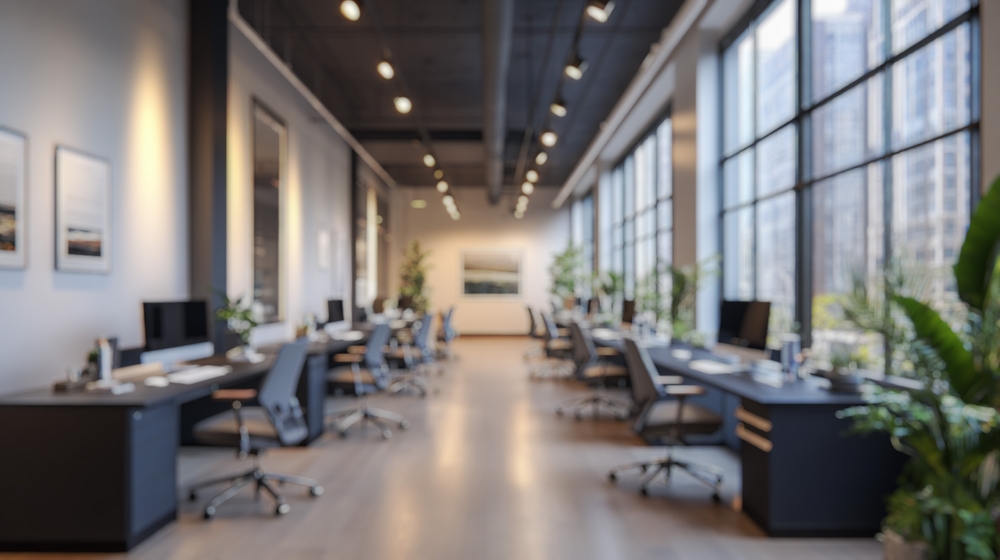
Creative office-seating options that boost productivity
In the evolving landscape of workplace efficiency, the role of office seating stands as a cornerstone in shaping productivity. The environment in which employees work significantly influences their output, and seating arrangements are a subtle yet powerful component of this environment. Poorly designed seating can lead to discomfort, fatigue, and even health issues, all of which detract from an employee’s ability to focus and perform effectively. On the contrary, well-thought-out seating solutions not only enhance comfort but also support good posture, reduce physical strain, and increase the overall well-being of workers. As companies increasingly recognize the link between employee wellness and productivity, there is a growing emphasis on investing in seating options that foster a conducive working environment.
In this story
Overview of Creative Seating Options
As businesses strive to create more dynamic and engaging workspaces, the traditional office chair is being supplemented—and in some cases, replaced—by a variety of innovative seating options. These creative alternatives are designed to cater to diverse working styles and preferences, providing employees with the flexibility to choose how they work best. Ergonomic chairs, for instance, are engineered to support the natural alignment of the body, reducing stress on the musculoskeletal system. Standing desks offer an opportunity to alternate between sitting and standing throughout the day, promoting movement and reducing the negative effects associated with prolonged sitting.
Additionally, exercise ball chairs introduce an element of active sitting, encouraging subtle movements that engage core muscles and improve balance. Modular seating, on the other hand, offers versatility, allowing spaces to be reconfigured easily to accommodate different tasks or group sizes, thereby fostering collaboration and interaction. As we delve deeper into each of these options, it’s evident that creative office seating is not just about aesthetics or novelty but about enhancing the functionality and productivity of the workplace.
Ergonomic Chairs
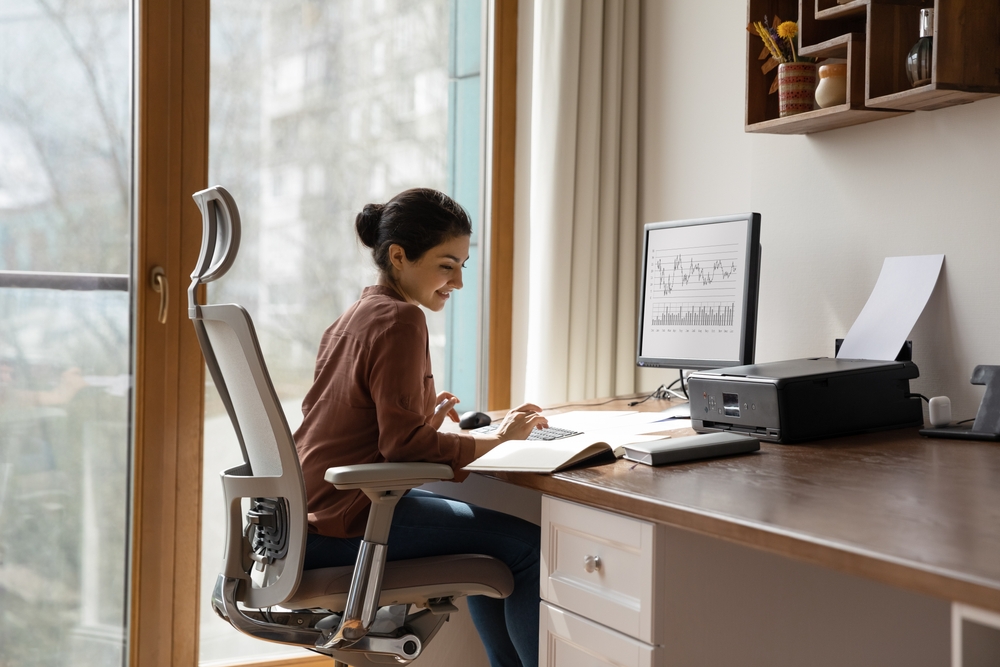
Features of Ergonomic Chairs
Ergonomic chairs are meticulously designed to support the human body’s natural postures during extended periods of sitting. These chairs are distinguished by several key features that set them apart from standard office seating. Adjustable seat height and depth are fundamental, allowing users to align their feet comfortably on the floor while maintaining a 90-degree angle at the knees. Lumbar support is another critical component, providing necessary reinforcement to the lower back and reducing the risk of strain. Additionally, ergonomic chairs often include adjustable armrests that support the arms at a natural angle, minimizing shoulder tension. A high backrest with a headrest supports the upper spine and neck, which is especially beneficial for individuals who spend long hours in front of a computer. Material choice is also a consideration, with breathable fabrics or mesh backrests enhancing comfort by promoting airflow and reducing heat buildup.
Benefits for Posture and Comfort
The thoughtful design of ergonomic chairs translates into significant benefits for posture and overall comfort. By aligning the spine correctly, these chairs help in maintaining the natural curve of the back, which is vital for preventing slouching and reducing the risk of musculoskeletal disorders. Proper posture alleviates strain on the spine, neck, and shoulders, thereby reducing discomfort that can be distracting during work. The ability to customize various elements of the chair ensures that users can adapt their seating to their individual body types and preferences, enhancing comfort and reducing fatigue. Additionally, ergonomic chairs promote active sitting, which encourages slight movements and shifts in position that are beneficial for circulation and muscle activity.
Impact on Productivity
The influence of ergonomic chairs on productivity is profound, as their design directly addresses common physical discomforts that can impede work performance. By mitigating the physical strain associated with prolonged sitting, these chairs help maintain high levels of concentration and cognitive function. Employees who are comfortable and free from pain are more likely to remain focused and efficient in their tasks. Furthermore, the reduction in discomfort and potential health issues translates to fewer breaks and absenteeism, contributing to consistent productivity. Organizations that invest in ergonomic seating often observe increased morale and satisfaction among employees, as well as a positive impact on overall workplace efficiency. The strategic implementation of ergonomic chairs is, therefore, not just an investment in furniture but a commitment to enhancing the well-being and output of the workforce.
Standing Desks
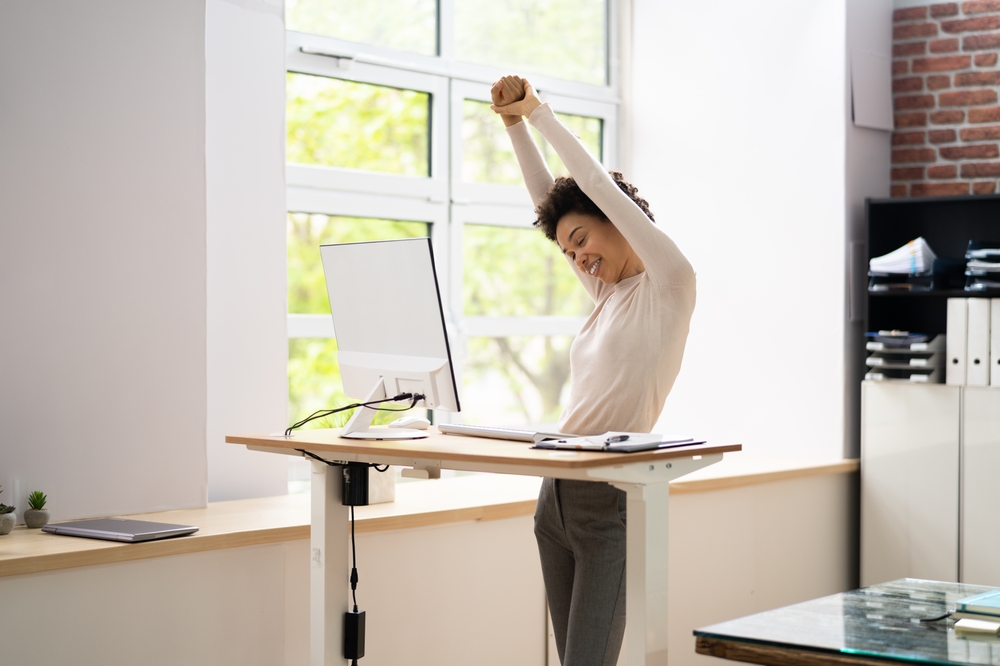
Health Benefits of Standing Desks
Standing desks have emerged as a popular alternative to traditional seated workstations, primarily due to their numerous health benefits. One of the most significant advantages is the potential to reduce the risks associated with prolonged sitting, such as cardiovascular disease and metabolic issues. By allowing users to stand, these desks promote better circulation, which can decrease the likelihood of developing health problems linked to sedentary behavior. Furthermore, standing desks encourage more muscle engagement compared to sitting, helping to burn more calories and potentially aiding in weight management. The improved posture and reduced strain on the lower back and neck are additional benefits that contribute to an individual’s overall physical well-being.
Adjustable Height Features
A key feature of standing desks is their adjustable height capability, which allows users to switch seamlessly between sitting and standing positions throughout the day. This flexibility is crucial because it supports ergonomic principles by enabling individuals to find their optimal working height, reducing strain on their bodies. Most modern standing desks are equipped with easy-to-use mechanisms, such as electric motors or manual cranks, that allow for smooth and quick adjustments. This adaptability not only accommodates different user heights but also caters to various tasks, enhancing comfort and preventing fatigue. By offering the option to alternate positions, adjustable standing desks can help mitigate the risks of both prolonged sitting and standing, striking a balance that promotes health and comfort.
Effects on Focus and Energy Levels
The impact of standing desks on focus and energy levels can be transformative for workplace productivity. Standing while working has been associated with increased alertness and improved concentration, as it encourages active engagement with tasks. The subtle physical activity involved in standing can lead to higher energy levels and a reduction in feelings of lethargy that often accompany extended periods of sitting. Furthermore, the ability to change positions can help prevent the monotony and stiffness that contribute to mental fatigue, thus maintaining a higher level of mental acuity throughout the workday. Companies that have integrated standing desks into their office environments often report positive feedback from employees, noting improvements in both job satisfaction and performance. By fostering an active and dynamic work environment, standing desks can play a vital role in enhancing both individual and organizational productivity.
Exercise Ball Chairs
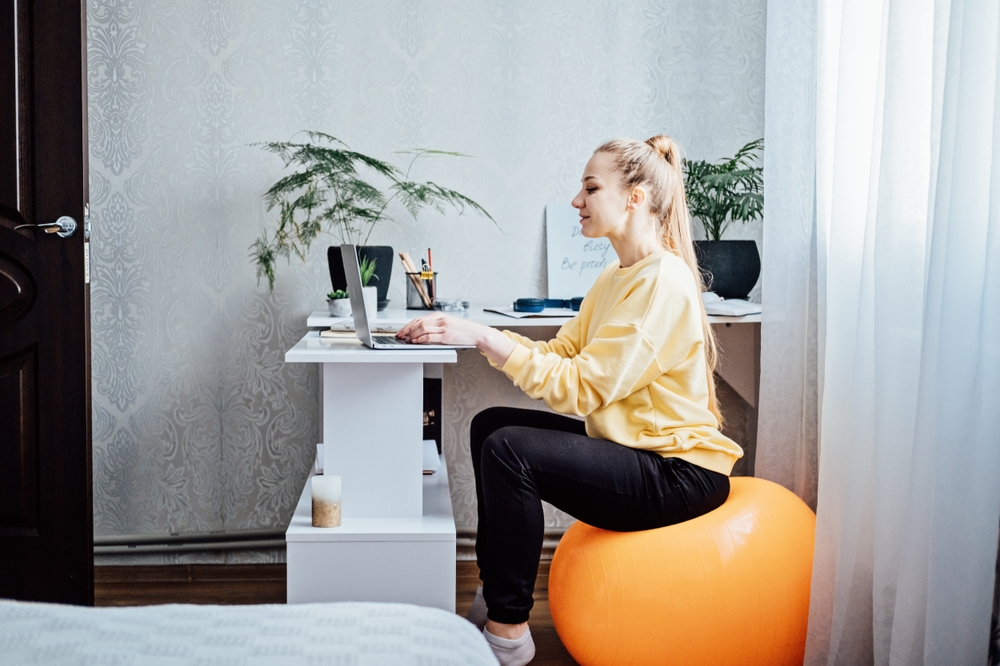
Core Strengthening Benefits
Exercise ball chairs, also known as stability ball chairs, are innovative seating options that offer unique health benefits, notably in strengthening the core muscles. Unlike traditional office chairs, exercise ball chairs require the user to actively engage their core to maintain balance and stability. This active engagement helps to strengthen the abdominal, back, and pelvic muscles over time. By promoting an upright sitting posture, these chairs can alleviate strain on the spine and enhance overall muscular endurance. Improved core strength is not only beneficial for physical health but also contributes to better posture, reducing the risk of developing musculoskeletal issues commonly associated with prolonged sitting.
Encouraging Movement and Flexibility
One of the standout features of exercise ball chairs is their ability to encourage movement and flexibility throughout the workday. The dynamic nature of sitting on an unstable surface prompts subtle movements and adjustments, which can enhance circulation and prevent the stiffness often associated with static sitting positions. This micro-movement helps keep joints and muscles flexible, potentially reducing the risk of injury and promoting overall mobility. The freedom to bounce, shift, and adjust positions on an exercise ball chair allows users to stay active even while seated, fostering a more dynamic and engaging work environment. This can be particularly beneficial in breaking the monotony of a traditional workspace and promoting a more energetic atmosphere.
Studies on Productivity Impact
The impact of exercise ball chairs on productivity has been the subject of various studies, reflecting mixed but generally positive outcomes. Some research indicates that the use of exercise ball chairs can lead to increased focus and alertness, as the need to maintain balance keeps the brain engaged and reduces the likelihood of zoning out. However, it is also noted that the novelty and physical demands of the chairs may initially distract some users until they adjust to the new seating arrangement. Long-term studies suggest that once users become accustomed to the exercise ball chairs, they often report enhanced concentration and a feeling of increased energy. Employers who have incorporated these chairs into their office settings often observe improvements in employee satisfaction and morale, which are key contributors to sustained productivity. While exercise ball chairs may not be suitable for everyone, they offer a creative and effective option for those seeking to integrate more activity into their daily routine.
Modular Seating

Adaptability to Different Tasks
Modular seating offers a versatile solution in modern office environments, accommodating a wide range of tasks and work styles. Unlike traditional fixed seating arrangements, modular seating systems are designed with flexibility in mind, allowing components to be easily reconfigured to suit different activities. Whether it’s a quick team meeting, a focused individual task, or a creative brainstorming session, modular seating can be adapted to meet the specific needs of the moment. This adaptability is achieved through a variety of components, such as movable chairs, benches, and tables that can be rearranged quickly and effortlessly. By supporting different work modes, modular seating enhances productivity by providing an environment that aligns with the diverse demands of the contemporary workforce.
Promoting Collaboration and Interaction
In addition to their adaptability, modular seating arrangements are particularly effective in promoting collaboration and interaction among employees. In today’s workplaces, where teamwork and communication are essential, the ability to create open, informal meeting spaces can facilitate spontaneous discussions and idea sharing. The flexible design of modular seating encourages employees to gather easily and comfortably, breaking down barriers that traditional office layouts might impose. This can lead to increased creativity and innovation, as employees feel more connected and engaged with their colleagues. By creating spaces that are conducive to both planned and impromptu interactions, modular seating can play a crucial role in fostering a collaborative office culture.
Examples of Successful Implementations
Numerous organizations have successfully implemented modular seating to enhance their office environments, with notable outcomes. One such example is Monteco in Budva, Montenegro, a coworking space that has embraced modular seating to create a relaxed yet professional atmosphere. Located just steps from the Adriatic Sea, Monteco’s flexible seating arrangements allow members to tailor their workspaces to their specific needs, whether they require a quiet corner for focused work or a collaborative area for team projects. This approach has not only improved the functionality of the space but has also been integral in building a vibrant community where professionals can thrive. Other companies have followed suit, recognizing that modular seating not only optimizes the use of office space but also significantly contributes to employee satisfaction and productivity. As more organizations seek to create dynamic, adaptable work environments, modular seating continues to emerge as a strategic choice in modern office design.
Real-world Example: Monteco in Budva
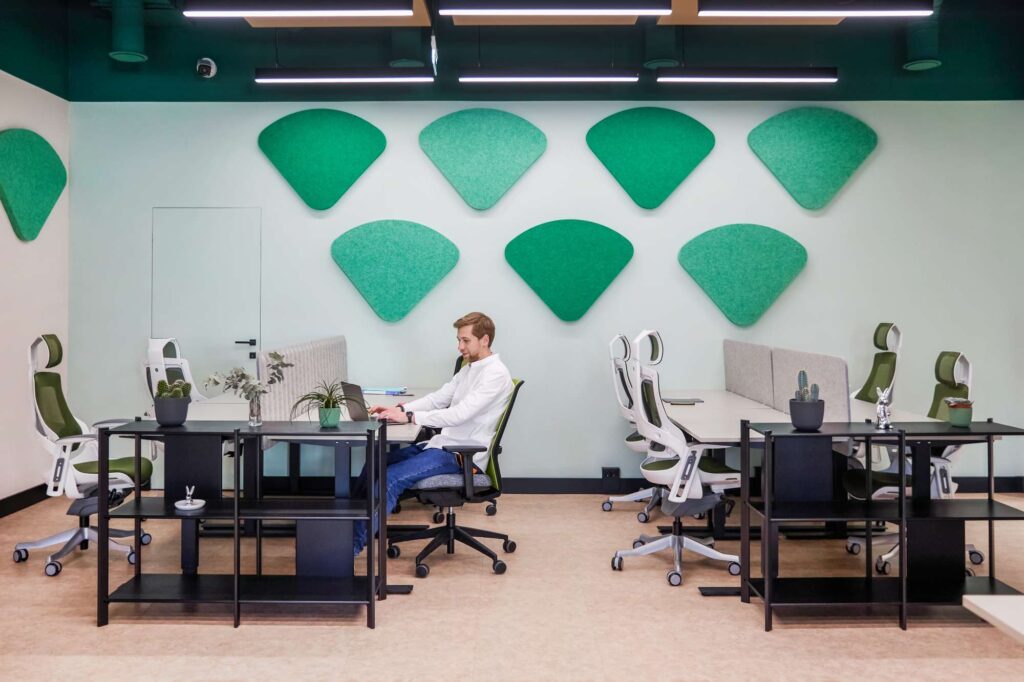
Overview of Monteco’s Seating Arrangements
Monteco, a coworking space in Budva, Montenegro, exemplifies how creative seating arrangements can transform a workspace into a hub of productivity and collaboration. Situated in a picturesque location near the Adriatic Sea, Monteco has crafted an environment that balances relaxation with professional efficiency. The space is equipped with a variety of seating options designed to accommodate different work styles and tasks. Modular seating arrangements dominate the layout, providing the flexibility to easily rearrange spaces for both individual focus and group collaboration. Alongside these, ergonomic chairs and adjustable standing desks are available, catering to those who prefer traditional workstations or the health benefits associated with standing. This diversity in seating options reflects a commitment to inclusivity, ensuring that every member can find a setup that suits their specific needs and preferences.
Benefits Observed in Productivity
The strategic implementation of varied seating arrangements at Monteco has yielded significant productivity benefits. By offering a range of seating choices, Monteco empowers its members to select environments that enhance their concentration and efficiency. The ability to switch between different seating setups throughout the day helps prevent fatigue and maintains high energy levels, allowing individuals to sustain their productivity over longer periods. Furthermore, the adaptability of the space fosters a sense of ownership and autonomy, which can lead to increased motivation and output. As a result, Monteco has become a space where professionals can thrive, supported by an environment that is conducive to both personal productivity and collaborative endeavors.
Feedback from Users
Feedback from Monteco’s users highlights the positive impact that these creative seating solutions have on their work experience. Many members appreciate the flexibility offered by the modular seating, noting that it allows them to tailor their workspace to suit different tasks. This adaptability is particularly valued in a coworking environment where the nature of work can change frequently. Users have also expressed satisfaction with the ergonomic and standing desk options, which provide comfort and health benefits that contribute to their overall well-being. The diverse seating arrangements not only support productivity but also create a welcoming and dynamic atmosphere, fostering a sense of community among members. This community spirit is often cited as a key factor in why professionals choose Monteco as their workspace, reinforcing the notion that a thoughtfully designed environment can significantly enhance both individual and collective success.
Expert Opinions and Research
Research on Office Seating and Productivity
Extensive research has underscored the significant impact of office seating on productivity. Studies conducted by leading ergonomic institutions reveal that well-designed seating solutions can reduce physical discomfort and enhance cognitive performance. For instance, research indicates that ergonomic chairs, which provide proper lumbar support and encourage good posture, can lead to a reduction in musculoskeletal pain by up to 60%. This decrease in discomfort directly correlates with improved focus and efficiency, as employees are less distracted by physical ailments. Additionally, studies on standing desks have shown that alternating between sitting and standing throughout the day can boost energy levels and improve mood, further supporting sustained productivity. These findings highlight the importance of investing in seating options that cater to the physical and psychological needs of employees.
Testimonials from Ergonomic Experts
Ergonomic experts universally advocate for the integration of diverse seating options in the workplace. Dr. Emily Johnson, a renowned ergonomist, emphasizes that “the key to a productive work environment is offering flexibility in seating arrangements to accommodate various body types and work styles.” She suggests that providing employees with a choice—whether it be ergonomic chairs, standing desks, or modular seating—empowers them to work in a way that optimizes their comfort and productivity. Another expert, Michael Lee, who specializes in workplace design, notes that “innovative seating not only addresses health concerns but also fosters creativity and collaboration by creating a more dynamic and engaging office environment.” These expert insights reinforce the notion that thoughtful seating design is a crucial element in crafting effective workspaces.
Future Trends in Office Seating
Looking forward, the future of office seating is poised to evolve alongside advancements in technology and changing workplace dynamics. One emerging trend is the integration of smart seating solutions, which incorporate sensors to monitor posture and provide real-time feedback, helping users maintain optimal seating positions throughout the day. Additionally, there is a growing interest in eco-friendly materials and sustainable design practices in seating manufacturing, reflecting a broader commitment to environmental responsibility. As remote and hybrid work models become more prevalent, there is also an increasing demand for versatile seating options that can easily transition between home and traditional office settings. These trends indicate a shift towards more personalized, adaptable, and sustainable seating solutions that not only enhance productivity but also align with the values of modern workforces.
Conclusion: Summary of Key Points
Throughout our exploration of creative office-seating options, it has become evident that the design and choice of seating play a pivotal role in enhancing workplace productivity. Ergonomic chairs support posture and reduce physical discomfort, while standing desks promote movement and energy. Exercise ball chairs encourage core strengthening and flexibility, and modular seating fosters adaptability and collaboration. These innovative solutions not only address health and comfort but also contribute to an engaging and dynamic work environment that supports diverse work styles and tasks.
When selecting office seating, it is crucial for organizations to prioritize flexibility and inclusivity. Providing a variety of seating options allows employees to choose arrangements that best suit their individual needs and work preferences, thereby optimizing comfort and productivity. Employers should consider incorporating a mix of ergonomic chairs, standing desks, and modular configurations to accommodate different activities and promote a healthy balance between sitting and standing. It is also advisable to involve employees in the decision-making process to ensure that the chosen solutions align with their preferences and requirements. Regular feedback and assessments can help refine seating choices and maintain an environment that continues to support productivity.
Final Thoughts on Enhancing Productivity
Ultimately, the quest to enhance productivity through office seating is about creating spaces that are not only functional but also empowering and inspiring. As work environments continue to evolve, the integration of innovative seating solutions will remain a key factor in supporting employee well-being and performance. By investing in creative seating options, organizations can foster a culture of health, collaboration, and efficiency, paving the way for sustained success. As we look to the future, the challenge lies in continuously adapting to changing needs and leveraging emerging trends to create workspaces that truly enhance productivity and employee satisfaction.


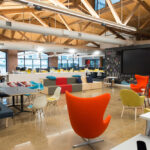
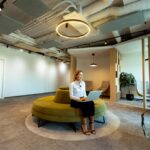
Leave a Reply